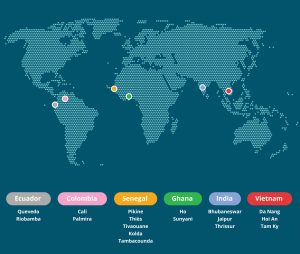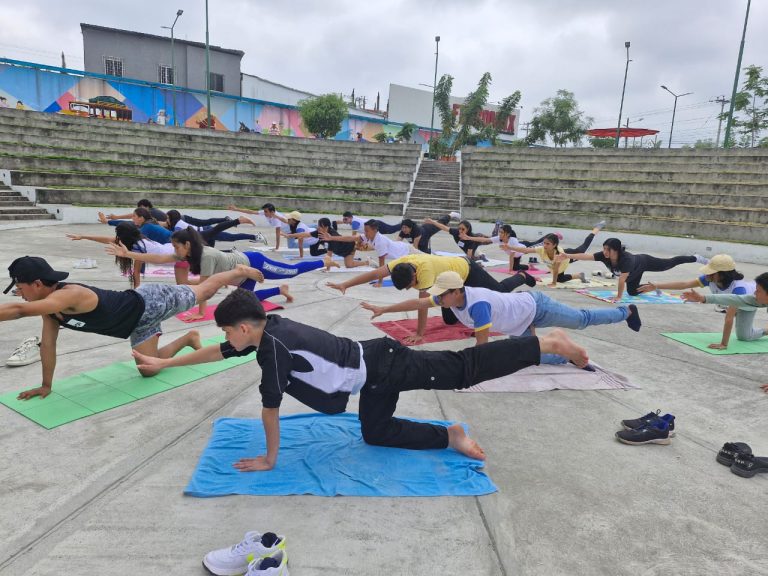What is World Cities Day?
World Cities Day, held annually on October 31st since its inception in 2014, marks the concluding celebrations of Urban October and focuses on themes central to sustainable urban development. Organised by UN-Habitat, this day aims to raise awareness about the pressing issues cities face as they are projected to house 70% of the world’s population by 2050. Each year, this day emphasises a specific theme, and in 2024, the focus is on Youth leading climate and local action for cities highlighting the vital role of young people in advocating for effective solutions to urban climate challenges.
This year’s theme underscores the need to involve youth in urban decision-making processes to leverage their creativity and drive sustainable development. It aims to promote innovative ideas from young individuals and explore how these concepts can be transformed into actionable initiatives in their cities. By fostering dialogue between young people and decision makers, World Cities Day aspires to create cities that reflect diverse voices and needs, ultimately contributing to a more inclusive, sustainable urban future.
HCA-II projects work with young people to create vibrant and healthy intermediary cities across the globe

With 10 active projects, the Healthy Cities for Adolescents (HCA-II) programme prioritises adolescents in intermediary cities and advocates for their crucial role in sustainable urban development. HCA-II supports the testing and scaling of cross-sector consortia initiatives that engage adolescents in advocating for healthier cities that meet their needs. As of November 2024, the programme supports initiatives in 17 intermediary cities across 6 countries (see map).
The diverse contexts of these cities present a wide range of challenges and opportunities that influence how projects operate to address adolescent needs effectively. Some examples of the city contexts in which HCA-II projects operate in include:
1. Riobamba (Ecuador): This intermediary city is the tenth largest urban centre in the country, with 31.5% of its population under the age of 20. Adolescents in Riobamba face some of the highest rates of poverty, malnutrition, teenage pregnancy and youth suicide in the country. The community also faces high levels of xenophobia and racism, especially affecting indigenous adolescents, women and immigrants, along with a notable lack of mental health support services. In addition, the limited availability of public recreational spaces for youth has contributed to an increase in substance abuse.
Despite these challenges, Riobamba offers important opportunities for adolescents to transform historical youth stereotypes and work together with local government and key stakeholders on health and wellbeing issues. The “Alza Tu Voz” project, led by the LAB-XXI consortium, empowers adolescents in Riobamba to become agents of change in their communities and participate in decision-making processes. Through the development of advocacy skills, socioemotional support, digital participation and educational innovation, the project enables adolescents to transform their city into a safe, friendly, healthy and intercultural space, promoting the creation of partnerships for the achievement of sustainable outcomes.
“The municipality cannot be everywhere, but this project encourages young people to take an interest in municipal activities, thereby empowering them to participate in city planning.” (Local authority official)
“Now I relate more to my city, and I have an openness to participate in city activities. It instilled in me the desire to be a part of and participate in something more. I’ve always wanted to be involved in city activities, but I’d never had the opportunity until this moment”. (Adolescent)
2. Da Nang (Vietnam): As Vietnam’s fourth largest city, Da Nang faces critical issues affecting children and adolescents, including the lack of quality health and nutrition services in schools, inadequate water, sanitation, and hygiene (WASH) facilities, insufficient social-emotional skills and mental health support, limited services to protect children from abuse and exploitation, restricted opportunities for child participation, and rising environmental pollution.
However, Da Nang aims to become a smart and child-friendly urban hub in the coming years. “Co-creating Healthy Cities for Adolescents and Youth in Vietnam“, in a consortium led by Unicef Vietnam, aims to help achieve this through ensuring that all adolescents in Da Nang can voice up their request for essential quality services. It advocates for local investments in children’s needs while empowering young people to actively participate in city development through innovative digital platforms. The project prioritises the involvement of adolescents from vulnerable backgrounds, including migrants and those with disabilities, ensuring they are meaningfully engaged.
“Our ambition in the coming year is to build Da Nang as a child-friendly city for children and adolescents. The implementation of the HCA-II project fits well with the city’s priorities and supports us in achieving these goals.”
(Local authority official)
“My expectation is that there is an improvement of participation of adolescents and youth in policy consultations – it would be important to hear the voices of adolescents and youth” (Adolescent)
3. Thiès (Senegal): Senegal’s urban population has doubled in recent decades, putting pressure on cities like Thiès, where young people aged 10 to 24 make up a third of the population. With a poverty rate of 34.1%, many young people face challenges such as inadequate health infrastructure and limited access to reproductive health services. Health issues are further exacerbated by early pregnancies, drug addiction, and low youth participation in decision-making due to under-representation in grassroots community organizations.
“Fort pour le Futur“, in a consortium led by Nutrition International, seizes the opportunity to improve adolescents’ health and wellbeing, particularly in nutrition and sexual and reproductive health and rights, while also empowering them to engage in local governance through training and capacity building. The project also focuses on enhancing infrastructure and services for youth and raising awareness about healthy lifestyles, aligning closely with the city’s goals for addressing young people’s health and wellbeing.
“There is an alignment between the activities of the project and the objectives of the city since they work in the same direction to address the health and well-being issues of young people.”
(Local authority official)
“In the beginning, I wasn’t considered much in my neighbourhood. After my capacities were strengthened through the project, I saw an improvement. The head of the neighbourhood now asks me to develop actions to benefit the community”.
(Adolescent)
Follow us for more updates
To stay informed about our latest project updates and join the conversation on creating healthier, more inclusive cities for all, follow HCA-II on Facebook and X. We will also participate in the upcoming World Urban Forum in Cairo, set to take place on 4th to 8th of November. Stay tuned to our daily updates!


